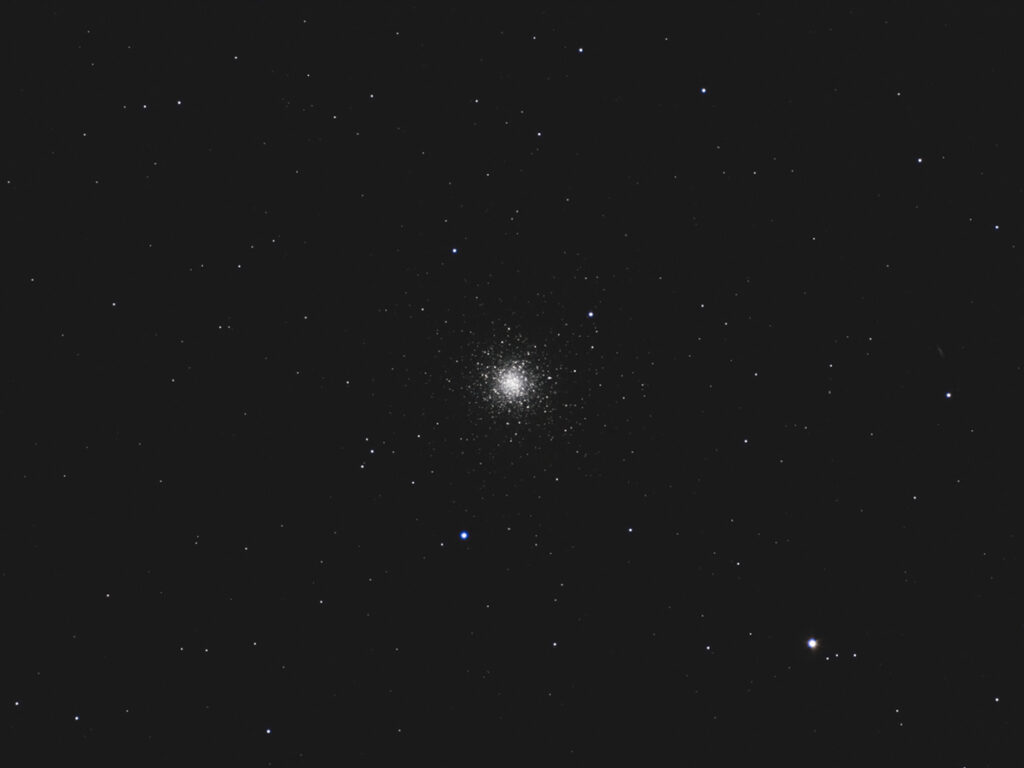
Telescope: Unitron 155 4” f/15 refractor, Atlas EQ-G
Camera: Canon EOS Ra full frame DSLR
Filter: 2” GSO IR Cut Filter
Guide scope: Orion 50mm Guidescope, ASI120MM, PHD, Dithered every 4 subs
Exposure: 26x120sec, ISO 800, saved as RAW
Darks: Internal (Long Exposure Noise Reduction)
Flats: 32×1/80s tee shirt flats taken at dusk
Average Light Pollution: Bortle 8, poor transparency, haze
Lensed Sky Quality Meter: 18.3 mag/arc-sec^2
Stacking: Mean with a 1-sigma clip
White Balance: Nebulosity Automatic
Software: Backyard EOS, Deepsky Stacker, Nebulosity, Photoshop
This is the first test image taken with my Unitron 155 on my Atlas EQ-G. One thing that impressed me about the 155 was the exceptionally flat field and nearly perfect star shapes across the entire field even with a full-frame camera. The shows a lot of potential for deepsky imaging as well as other tasks such as photometry and astrometry.
M3 is a beautiful example of a globular cluster in a relatively lonely stretch of sky. The cluster is a member of the galactic halo and spends much of its time orbiting well outside the plane of the galaxy. It is presently 33,000 light years away from us, 40,000 light years from the galactic core, and 33,000 light years ‘above’ the galactic plane. Home to about 500,000 stars, M3 is relatively young as globular clusters go with an estimated age of 8 billion years.
M3 is currently well placed rising in the northeast during the early evening.
Recent Comments